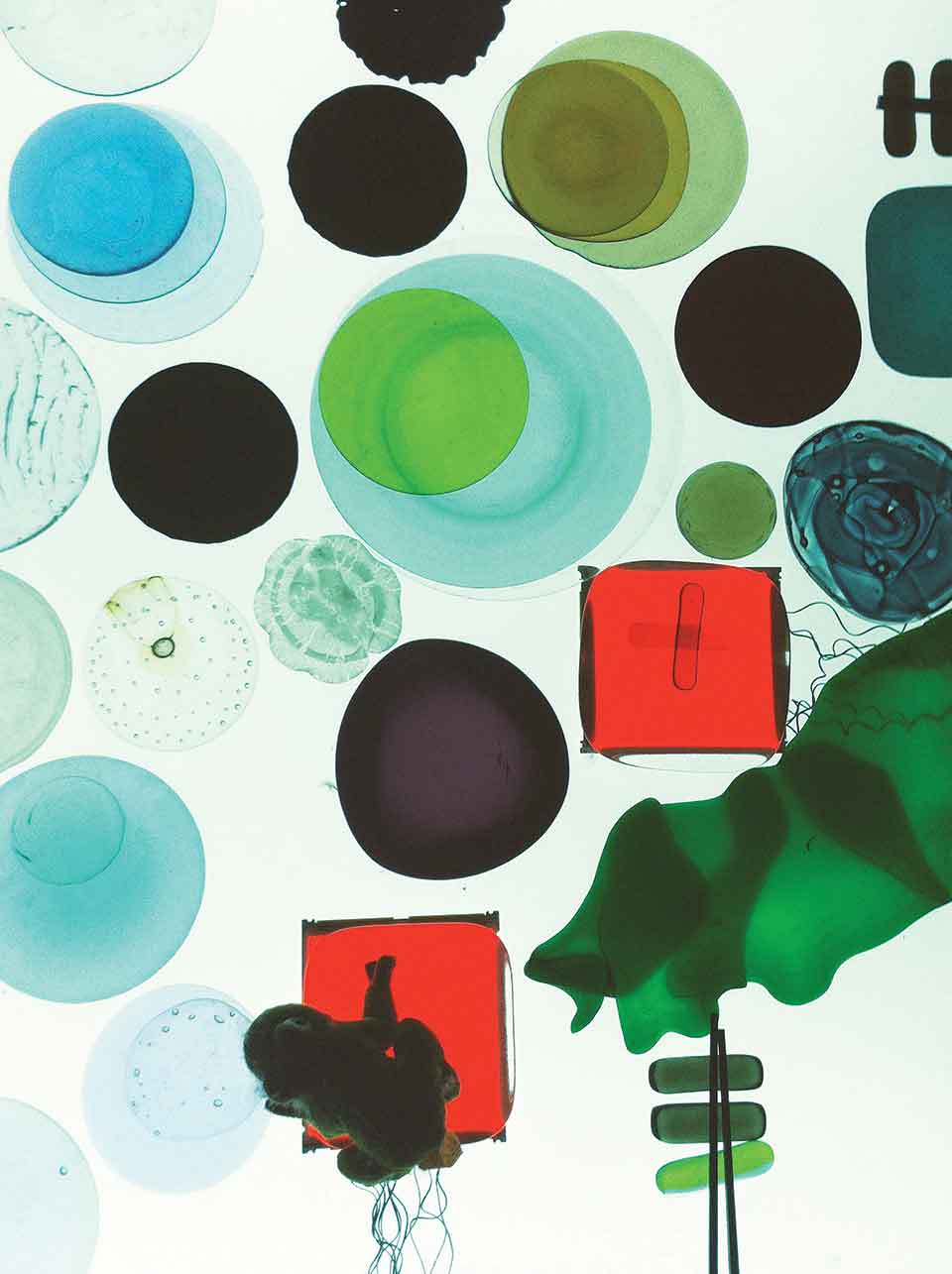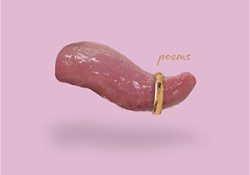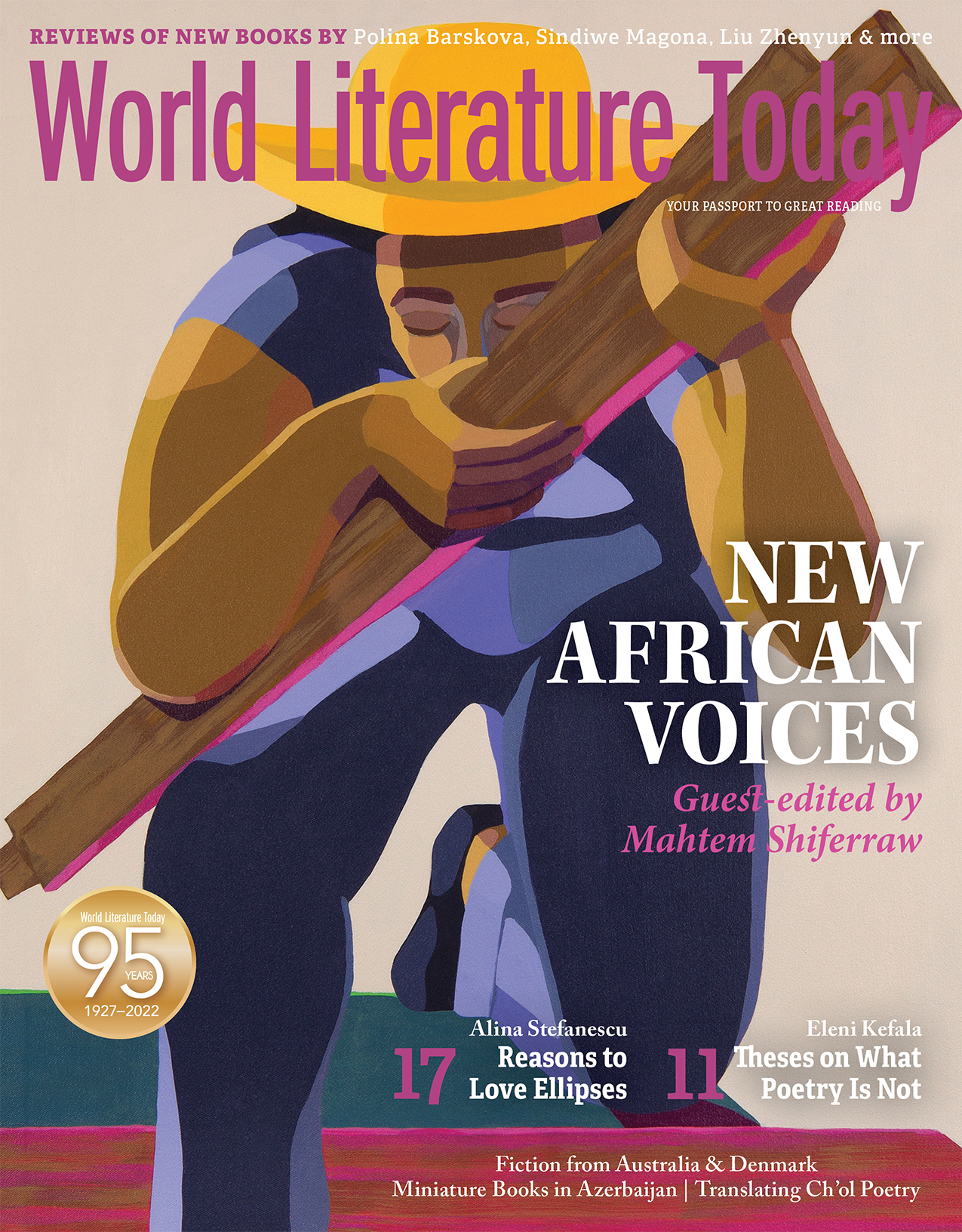17 Reasons I Love Ellipses in Poetry, Prose, and Translation

●1. I love that ellipses begin with an ancient Greek word meaning “to leave out.” I admire this wistful, self-quieting punctuation mark composed of three dots, separated by three spaces, alluding to omission. Ellipses build tension and suspense: the weight of the silence between dots expands with the spacing; the prick of each point evokes the closure of a period; repetition serves to open, expand, and undermine ending.
●2. I love Paul Celan, who taught me to appreciate ellipses, to respect the sounds inside silence, to honor statements that finish in their relation to silence, and who uses an ellipsis so carefully in “Twelve Years” (trans. Pierre Joris):
The line that stayed
true, that became
true: . . . your
house in Paris
I love Paul Celan, who taught me to appreciate ellipses, to respect the sounds inside silence.
●3. I love a true thing that stays secret, sacred, hallowed. I love the disruption enacted by extension, the way my mind reaches for closure, for an end point, only to be thrown away from periods. Ellipses say there is more . . . something is missing. I love how they ask us to wait, or tell us that waiting is useless, give us the beat of three dots, a baton tapping against glass, a threshold of empty suspension, and how this leads me to aposiopesis, the ancient Greek rhetorical gesture that means “becoming silent” and occurs when the speaker or writer breaks off abruptly, leaving the statement incomplete. I love how it points toward the unsayable . . . and how it does so for different reasons, some of which are godlike. I love how Celan leans into aposiopesis, setting up a threshold between the text and the reader that rises from the page, which isn’t a trick but a commitment to his relation to language, to what language limits in his mother’s German tongue, and how he articulates this Microliths: Posthumous Prose, insisting: “Some matters become understandable through the unspoken; the poem knows the argumentum e silentio. There thus exists an ellipsis, which one must not mistake for a trope, or worse, for stylistic refinement. The god of the poem is indisputably a deus absconditus.”
●4. I love how gesturing toward the implied shifts the burden of belief on the reader, making us responsible for what we read into the silence, making the terror of a missing deity palpable. There is relief in how Celan left the world of known sound for silences that resist reckoning, relief in the ellipses that refuse the hope of restoration, relief in the denying of catharsis we crave from trauma. The meaning we want to make of the Shoah, the disaster, relies on catharsis, the narrative vehicle for purification. Yet this purified, restored world is precisely what Celan will not give us. I love him for that.
●5. I love how ellipses infect translation. Anne Carson describes translation’s “physical silences,” the formal and epistemological challenges rising from fragmentation: “a poem of Sappho’s inscribed on a papyrus from two thousand years ago that has been torn in half,” where a large chunk of the poem is occupied by absence of the original text. And perhaps we are indicted for this failure of preservation: the ruin we didn’t preserve in the broken line of Sappho, the emptiness that could be anything, the untranslated point of origin. But I love how Carson makes use of the space where Sappho’s “Fragment 31” breaks off (“But all is to be dared, because even a person of poverty . . .”), how she uses this single ellipsis to write an essay putting Sappho, Marguerite Porete, and Simone Weil in dialogue on love triangles and supernatural longings.
●6. I love how translators deal with physical silence with bracketed ellipses, as in Susan Bernofsky’s translation of Robert Walser’s Microscripts, where bracketed ellipses designate an indecisive or illegible word, or a place where Walser’s tiny, handwritten script breaks off in the source text.
●7. I love how things break off and become monuments, depending on who is reading, translating, or writing. I love how ellipsed silences vary across translations, how bracketed ellipses also mark a tended silence, a silence that is kept rather than accidental. I love figuring out whose silence is what, whose elision is why: where Carson and Bernofsky use the bracket to posit an ending—an absence of more—translator Philip Payne uses it to indicate the original text had more contents but they were not included.
●8. I love the ellipses, translated and transcribed, in Payne’s translation of Robert Musil’s Diaries, and this line: “From the time of my youth I have considered the aesthetic to be ethics. [......]” And the bracket that directs me to Payne’s “list of omissions,” indexed at the back of the book, to the end-note which begins with the last words before the bracket:
“to be ethics.” [AF, 777–79: the entry continues with extensive, but compressed and only partly comprehensible notes on aesthetics with cross-references to other notebooks]
I excerpt this omission-note in its entirety as a crumb for other Musil-obsessed writers or translators with access to archives. I’ll do anything for ghosts who meet me in Musil’s shadow, where the relationship between speaking and comprehending, or translating out of and into a foreign language, occurs continuously within the native language itself, as it occurs within all languages; odd idioms, new words, neologisms, academic discourse, pronouns, novel diseases. And I love Musil for journaling: “The writer, in relation to the reader, writes a foreign language [......].” As I love Payne for sending me back to the list of omissions, where I discover the omitted parts include “various entries, some short, on a military funeral, on consciousness, on Lord Halifax, on early film and on theater, on the study of art, on the concept of abstraction with reference to the behavior of dogs, etc.” The dog in this almost got away.
I’ll do anything for ghosts who meet me in Musil’s shadow. . .
●9. I love reviewing my notebooks, realizing that all the passages I recopied from Musil’s diaries are attached to omitted entries. I love the things I preserved for their silences and irrelevance. Like many Eastern defectors from Iron Bloc silences, my parents had a CIA handler. I did not know this until after I had kids—it remains an abyss we avoid in conversation. Married to a Polish nuclear physicist, D. loved poetry, liberalism, the war of idealisms, the writers who risked their lives to bear witness to history on paper. He wore his heart on his sleeve in blue neon. In the decade after September 11, 2001, D.’s visits grew less frequent. I am depressed, he said. He took his own life from the hands of the US government, leaving behind a son. [........]
●10. I love when Anne Carson refers to Celan as “a poet who uses language as if he were always translating,” and how the truth of this statement inflects Pierre Joris’s intimate translations of Celan, and how translation, itself, requires a passion for ellipses.
●11. I love how ellipses make things happen, how they lead us places like crumbs dropped across a page one follows into the dark forest, or how they mark time, how they can make a man grow old, grow into rolled trousers, as we see in T. S. Eliot’s poem “The Love Song of J. Alfred Prufrock”:
I grow old . . .
I grow old . . .
I shall wear the bottoms of my trousers rolled.
I love feeling my beard grow into my trousers, as I love ellipses’ relations to their host language, how in Chinese, the ellipsis exists as six dots in two groups of three that occupy the same horizontal or vertical space as the characters (. . . . .).
●12. I love that an elliptical style is difficult to understand, which is to say, reticent, avoidant, complicated, while a word used to describe an oval or egg-shaped object is elliptic. I love poems that take the form of diptychs or triptychs because now I want to play with the oval and imagine an elliptych.
●13. I love that cinematographer Robert Bresson urged us not to chase poetry since “it penetrates unaided through the joins (ellipses).” In filmmaking, he relied on the transformation of images set in proximity, which he compared to how color changed through contact with other colors, like “modulations in music.” Resonances make silence musical, and Bresson pays special attention to “the last syllable of the last word, or the last noise, like a held note,” and wow do I love how ellipses resemble the sustain pedal on a piano, opening the echo of the held sound toward silence, carrying it forward in diminuendo.
I love how ellipses resemble the sustain pedal on a piano, opening the echo of the held sound toward silence, carrying it forward in diminuendo.
●14. If ellipses are carriers of echoes, I love how the poem is changed by the widening shadow of the last word before the ellipsis, and how this brings me to Don Mee Choi’s poem “Ahn Hak-Sŏp #5,” which transcribes the memories of a communist prisoner in South Korea, and how Choi uses ellipses as anaphora, allowing the horror of torture to meet the image of a Japanese word, and how all of this moves from the repetition of the left-out:
. . . the torturer asked
. . . what if I smash your head to bits?
. . . I said
. . . e e e
. . . ideology
●15. I love how Ander Monson experiments with ellipses-effusion in an essay that leans into failure at the physical, using ellipses as those “joins” for fragments, making the power of suggestion visual:
. . . . . the fragment evokes the once-whole torso . . . . .
. . . . . . . . . the car glass shattered on the road . . . . . . . . .
And how Monson massages the “stalled fragment” in its relation to failure: the piece which fails to be cross-hatched into the paragraph, the split end: “. . . . . the fragment evokes the once-whole torso . . . . .” And then: “. . . . . . . . . the car glass shattered on the road . . . .” And how this trail of dots leads us to the wreck, which leads us to wonder why we need to ogle the details of catastrophe. What do we know about ourselves—about our hungers and terrors—when the dot-dot-dot makes us complicit in acknowledging what we want to see is horrible?
●16. I love how ellipses put pressure on scaffolding (or what Monson calls “the pressure that any literary thing exerts”), to be forced to consider the exposed joins and joists, the anxiety of the x-ray, the palimpsest, the secret behind the veil. I love how ellipses rub my face in the shadows, requiring me to acknowledge what I want from words.
Silence holds an expectancy similar to that of the mystic: the state of awaiting prophecy, the desert that brings the ecstatic vision.
●17. Silence holds an expectancy similar to that of the mystic: the state of awaiting prophecy, the desert that brings the ecstatic vision. I love the paradox of silence in how much it expects from sound. What we want from the prophet is an answer to the question Why. But the prophet points to a larger silence to explain it.
I love how poets bring this silence to the page, in the tread marks of ellipses, in the footprints of certainty walking away . . .
Birmingham, Alabama
Books and Essays Referenced
- Robert Bresson, Notes on the Cinematograph, trans. Jonathan Griffin (NYRB Classics)
- Anne Carson, Economy of the Unlost (Princeton University Press)
- Anne Carson, “Decreation: How Women Like Sappho, Marguerite Porete, and Simone Weil Tell God,” in Decreation: Poetry, Essays, Opera (Penguin Random House)
- Anne Carson, “Variations on the Right to Remain Silent,” A Public Space
- Paul Celan, Memory Rose into Threshold Speech: The Collected Earlier Poetry, trans. Pierre Joris (Farrar, Straus and Giroux)
- Paul Celan, Microliths: Posthumous Prose, trans. Pierre Joris (Contra Mundum Press)
- Don Mee Choi, DMZ Colony (Wave Books)
- Ander Monson, “Failure: A Meditation, Another Iteration (with Interruptions),” in Neck Deep and Other Predicaments (Graywolf Press)
- Robert Musil, Diaries, 1899–1942, ed. Mark Mirsky, trans. Philip Payne (Basic Books)
- Robert Walser, Microscripts, trans. Susan Bernofsky (New Directions)
When you buy a book using our Bookshop Affiliate link on this page, WLT receives a commission. Thank you for your support!













